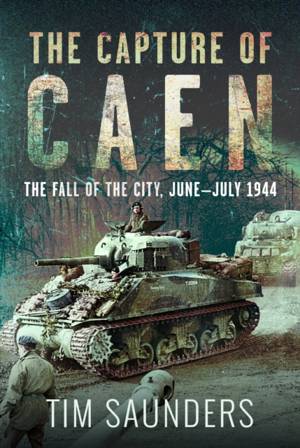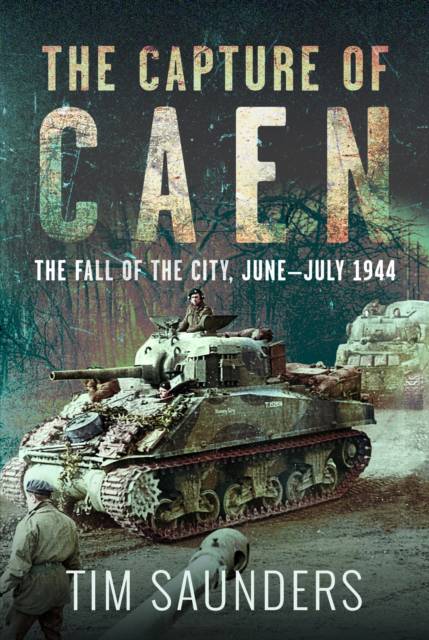
- Afhalen na 1 uur in een winkel met voorraad
- Gratis thuislevering in België vanaf € 30
- Ruim aanbod met 7 miljoen producten
- Afhalen na 1 uur in een winkel met voorraad
- Gratis thuislevering in België vanaf € 30
- Ruim aanbod met 7 miljoen producten
Zoeken
€ 34,95
+ 69 punten
Omschrijving
The 1944 battle for Caen saw intense Allied-German combat, defensive actions, and key operations like Charnwood.
With the German reinforcement of Normandy in April 1944, the chance of I Corps capturing Caen on D Day or shortly thereafter had become increasingly unlikely. And so it was, during D+1, the 21st Panzer Division were joined by the Hitlerjugend Panzer Division in a defensive wall around the north and west of the city, while the Allied main effort was transferred west to XXX Corps.
This left 3rd British and 3rd Canadian divisions on the Caen front in a period of 'active defence', with patrolling and a series of remarkably bloody actions, in the shadow of other operations such as EPSOM, that were fought to nibble away at the German positions.
In July, with the Second Army's build up complete and rising criticism of General Montgomery's conduct of the campaign in Normandy, attention returned to Caen with the Canadians taking part in Operation WINDSOR: the attack on the heavily defended Carpiquet Airfield. This was a necessary precursor to I Corps' Operation CHARNWOOD. The final battle for Caen opened on the evening of 7 July 1944 with the controversial bombing of the northern part of the city, and at dawn the established British and Canadian divisions attacked having been joined by the newly arrived 59th Staffordshire Division in their first battle. By the following evening the Lutwaffefeldt Division had collapsed, and the Hitlerjugend were withdrawing to the south of the River Orne.
With the German reinforcement of Normandy in April 1944, the chance of I Corps capturing Caen on D Day or shortly thereafter had become increasingly unlikely. And so it was, during D+1, the 21st Panzer Division were joined by the Hitlerjugend Panzer Division in a defensive wall around the north and west of the city, while the Allied main effort was transferred west to XXX Corps.
This left 3rd British and 3rd Canadian divisions on the Caen front in a period of 'active defence', with patrolling and a series of remarkably bloody actions, in the shadow of other operations such as EPSOM, that were fought to nibble away at the German positions.
In July, with the Second Army's build up complete and rising criticism of General Montgomery's conduct of the campaign in Normandy, attention returned to Caen with the Canadians taking part in Operation WINDSOR: the attack on the heavily defended Carpiquet Airfield. This was a necessary precursor to I Corps' Operation CHARNWOOD. The final battle for Caen opened on the evening of 7 July 1944 with the controversial bombing of the northern part of the city, and at dawn the established British and Canadian divisions attacked having been joined by the newly arrived 59th Staffordshire Division in their first battle. By the following evening the Lutwaffefeldt Division had collapsed, and the Hitlerjugend were withdrawing to the south of the River Orne.
Specificaties
Betrokkenen
- Auteur(s):
- Uitgeverij:
Inhoud
- Aantal bladzijden:
- 296
- Taal:
- Engels
Eigenschappen
- Productcode (EAN):
- 9781036150402
- Verschijningsdatum:
- 27/11/2025
- Uitvoering:
- Hardcover
- Formaat:
- Genaaid
- Afmetingen:
- 159 mm x 235 mm
- Gewicht:
- 820 g

Alleen bij Standaard Boekhandel
+ 69 punten op je klantenkaart van Standaard Boekhandel
Beoordelingen
We publiceren alleen reviews die voldoen aan de voorwaarden voor reviews. Bekijk onze voorwaarden voor reviews.








